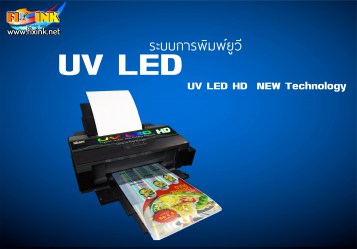
หลายๆคนที่พิมพ์ภาพคงจะพบปัญหการพิมพ์แล้วสีไม่ตรงกับหน้าจอ วันนี้ผมได้นำบทความเพื่ออธิบายถึงสาเหตุที่ทำให้เกิดอาการดังกล่าว
RGB vs CMYK
เรื่องของสีในการจัดทำสื่อสิ่งพิมพ์นั้น เรามักประสบปัญหาว่าทำไมงานพิมพ์จริงที่พิมพ์จากเครื่องพิมพ์ระบบออฟเซ็ทจึงมีสีบางสีในภาพพิมพ์ผิดเพี้ยนไปจากภาพที่เห็นบนจอคอมพิวเตอร์เวลาออกแบบ อีกทั้งเจอะเจอคำว่า RGB และ CMYK นั้นคืออะไร แตกต่างกันอย่างไร และจะเลือกใช้อย่างไร เพื่อประโยชน์ในการจัดทำสิ่งพิมพ์และการนำไปใช้ในการสื่อสารกับโรงพิมพ์ตลอดจนป้องกันปัญหาที่อาจเกิดขึ้นโดยความเข้าใจที่ไม่ตรงกัน บทความนี้จะกล่าวถึงเรื่องของสีและปรากฏการณ์ที่เกิดจากการนำไปใช้
แสงสีและหมึกพิมพ์
ภาพที่เรามองเห็นจากจอคอมพิวเตอร์เป็นภาพที่เกิดจากแหล่งกำเนิดแสงของแสงสี 3 สี คือ แสงสีแดง (Red) แสงสีเขียว (Green) และแสงสีน้ำเงิน (Blue) เรียกย่อว่า RGB ซึ่งเป็นแม่สีของแสง แสงสีทั้งสามจะส่องมาที่จอภาพ และเกิดการการผสมของแสงสี ณ จุดแต่ละจุดบนจอตามปริมาณของแสงที่ต่าง ๆ กัน ทำให้เกิดเป็นสีต่าง ๆ มากมายบนจอ monitor และเมื่อแสงสีทั้งสามมาผสมกันด้วยปริมาณแสงที่เท่ากันจะเกิดเป็นแสงสีขาว จึงเรียกว่า Additive Primary Colors
ส่วนภาพพิมพ์ที่ปรากฏบนแผ่นกระดาษขาวเป็นภาพที่เกิดจากการที่แสงสีขาวส่องทะลุชั้นของหมึกพิมพ์ 4 สี คือสีเหลือง (Yellow) สีชมพู (Magenta) สีฟ้า (Cyan) และสีดำ (Black) สะท้อนผิวกระดาษขาวแล้วจึงเข้าสู่ตาของเรา สีทั้งสี่เมื่อมีปริมาณของหมึกแต่ละสีต่าง ๆกันในบริเวณเดียวกันจะทำให้เกิดเป็นสีต่าง ๆ มากมาย สีทั้งสี่ซึ่งเรียกย่อว่า CMYK ถือเป็นแม่สีสำหรับการพิมพ์ ตามทฤษฎีแล้ว เมื่อนำหมึก 3 สี คือสีเหลือง สีชมพู และสีฟ้ามาทับกัน จะได้เป็นสีดำ จึงเรียกว่า Subtractive Primary Colors แต่ในความเป็นจริงเมื่อนำ 3 สีดังกล่าวมาทับกันจะได้สีเทาน้ำตาล ซึ่งเป็นเพราะความไม่บริสุทธิ์ของสารที่นำมาทำหมึก ดังนั้นในการพิมพ์จึงต้องนำหมึกสีที่ 4 คือสีดำมาช่วย เราจึงเรียกว่าเป็นการพิมพ์ 4

ขอบคุณข้อมูลจาก http://www.supremeprint.net/ สุพรีมพริ้น จำกัด

Many people who print images may encounter printing problems and the colors do not match the screen. Today I bring you an article to explain the reasons that cause such symptoms.
RGB vs CMYK
The subject of color in the preparation of publications. We often have a problem why actual prints printed by offset printers have some of the colors in the prints distorted from the image seen on a computer screen when designing. Also meet the words RGB and CMYK, what are the differences? And how to use For the benefit of the preparation of publications and the use of communication with the printer as well as prevent problems that may arise by misunderstandings. This article will look at colors and the phenomena that arise from their use.
Light color and inks
The image that we see from a computer monitor is a picture of a light source of three color light: Red, Green, and Blue light, abbreviated as RGB, which is the primary color of light. Three colored lights will shine on the screen. And there is a mixture of light at each point on the screen according to the amount of light that is different, causing many different colors on the monitor screen and when all three lights are mixed with the same amount of light, it will be White light is therefore called Additive Primary Colors.
The printed image that appears on a white sheet is an image resulting from a white light penetrating the 4-color ink layer: Yellow, Magenta, Cyan, and Black. The white paper then enters our eyes. The four colors, when the amount of each ink color is different Each other in the same area results in many different colors. The four colors, abbreviated as CMYK, are the primary colors for printing. It will be black, so it is called Subtractive Primary Colors, but in fact, when the three such colors are combined, they will be gray-brown. This is because of the impurity of the substances used to make the ink. Therefore, in printing, the fourth color ink has to be applied to help. So we call that as type 4.

ขอบคุณข้อมูลจาก http://www.supremeprint.net/ สุพรีมพริ้น จำกัด
















